
Business
19:20, 13-Sep-2017
CAEXPO encounters: Guangxi’s transformation into transport nexus
Nadim Diab

Tens of thousands of visitors, from home and countries near and far, have descended on Nanning in south China looking to travel, trade, invest and network. For the capital of Guangxi Zhuang Autonomous Region, September spells the China-ASEAN Expo (CAEXPO) – an annual fixture since 2004 to deepen business cooperation, increase mutual investment opportunities and promote connectivity between the Asian powerhouse and the 10-nation bloc.
The success of the matchmaking symposium, the second biggest exhibition in the country, speaks volumes about the increasingly intimate trade relations between China and ASEAN member nations and showcases Guangxi’s story of turning obstacles into opportunities.
Despite its location in a peripheral area on the Chinese mainland, Guangxi has a major edge thanks to its geography. Its coasts present an advantage for sea transport, while its land border with Vietnam, stretching over 1,000 kilometers, gives it easy access to Southeast Asia. But for a long time, the agricultural region endured living in the shadows of its prosperous and industrialized neighbor – Guangdong Province.
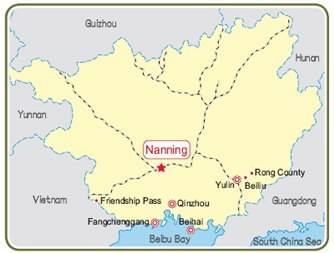
Guangxi links China to ASEAN and inland Chinese provinces to coastal regions. /Photo via HKTDC
Guangxi links China to ASEAN and inland Chinese provinces to coastal regions. /Photo via HKTDC
Eclipsed economy
When other coastal regions, from Guangdong up to Shanghai Municipality and Shandong Province, were enjoying rapid industrialization as factories chugged away unhindered producing overseas-bound goods, Guangxi was denied of the same benefits resulting from China’s push to become an export-oriented manufacturing giant.
Between 1978 and 2003, the per capita GPD in Guangxi rose from 225 yuan to 5,969 yuan – an impressive leap yet well below the national average that jumped from 379 yuan to 10,778 yuan in the same period. Meanwhile, the per capita GDP in Guangdong, a more modern industrial hub, was 17,213 yuan in 2003 – almost thrice as much as Guangxi’s figure.
In their book, “The Pan-Pearl River Delta: An Emerging Regional Economy in a Globalizing China”, Yue-man Yeung and Jianfa Shen note that policies to prod the sluggish economic development and reforms to attract investment since 1984 failed to have the desired impact on Guangxi.
The region had to wait until the 21st century for its economy to get a shot in the arm.
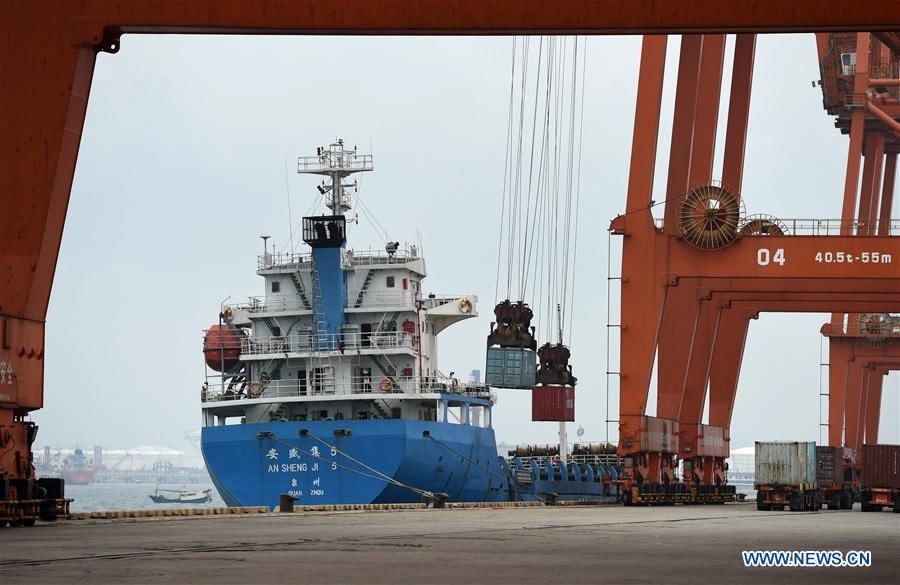
Qinzhou port in south China's Guangxi Zhuang Autonomous Region. /Xinhua Photo
Qinzhou port in south China's Guangxi Zhuang Autonomous Region. /Xinhua Photo
Enter 2000 – the year the government rolled out its “go west” strategy to stimulate the economic performance and growth of 12 western provincial-level regions, including Guangxi, through a flurry of measures supporting infrastructure construction and development and foreign investment.
Infrastructure frenzy
The region embarked on a journey to make the most out of its geographic advantages as infrastructure projects and upgrades broke ground with the aim of turning Guangxi into a nexus of transport connections.
The shared border with Vietnam and its sea façade meant that Guangxi could be developed into a strategic pathway linking China to ASEAN countries and providing a convenient channel for trade between the two sides. Guangxi, being sandwiched between the landlocked territories of Yunnan, Guizhou and Hunan, also held great potentials (and responsibilities) as a bridge between these inland economically-challenged provinces and coastal regions like Guangdong, Hong Kong and Macao all the way to the distant lands of ASEAN states.
A transport hub was soon taking shape with a river channel, seaports, airports, railways and highways linking domestic and regional markets together, and gradually turning Guangxi into China’s gateway to ASEAN countries.
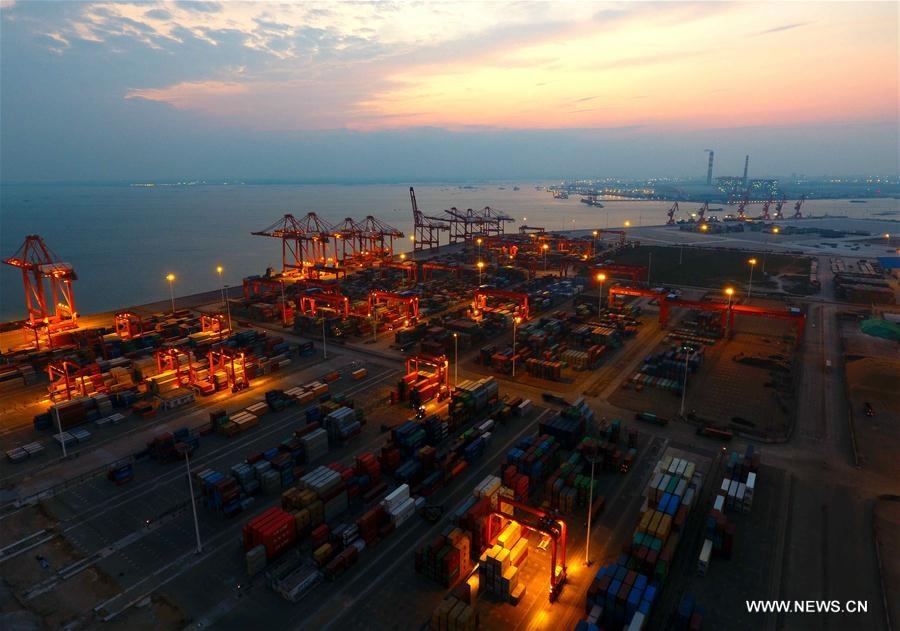
The bonded port area in Qinzhou, south China's Guangxi Zhuang Autonomous Region. /Xinhua Photo
The bonded port area in Qinzhou, south China's Guangxi Zhuang Autonomous Region. /Xinhua Photo
With the China-ASEAN Free Trade Area (CAFTA) slowly coming into existence starting 2002, the comprehensive and labyrinthine network of infrastructure was complemented by a host of development opportunities to facilitate and deepen financial and business connectivity between the two sides. In 2008, the Beibu Gulf Economic Zone, with its bonded areas and industrial parks, was set up with the aim of developing sea transport. Similar projects were put forward during the 12th Five-Year Plan period (2011-2015) to cement Guangxi’s place as a window between China and ASEAN countries and promote regional integration.
BRI: A boon for Guangxi
Beijing’s proposal of the Belt and Road Initiative (BRI) in 2013 – a massive development project to connect the economies of countries from China to Europe, Africa and elsewhere through an extensive network of infrastructure, information and unimpeded trade corridors – injected fresh impetus in the transformation of Guangxi. This is because Guangxi is a convergence point between the two major land and seaborne routes which make up the New Silk Road.
According to a blueprint laid out by the National Development and Reform Commission in March 2015, China will capitalize on the comparative advantages of its provincial-level regions with the aim of engaging them in the ambitious plan. In the document, entitled “Vision and Actions on Jointly Building the Silk Road Economic Belt and 21st Century Maritime Silk Road”, Guangxi was said to have “unique advantages” based on its land and sea links to ASEAN.
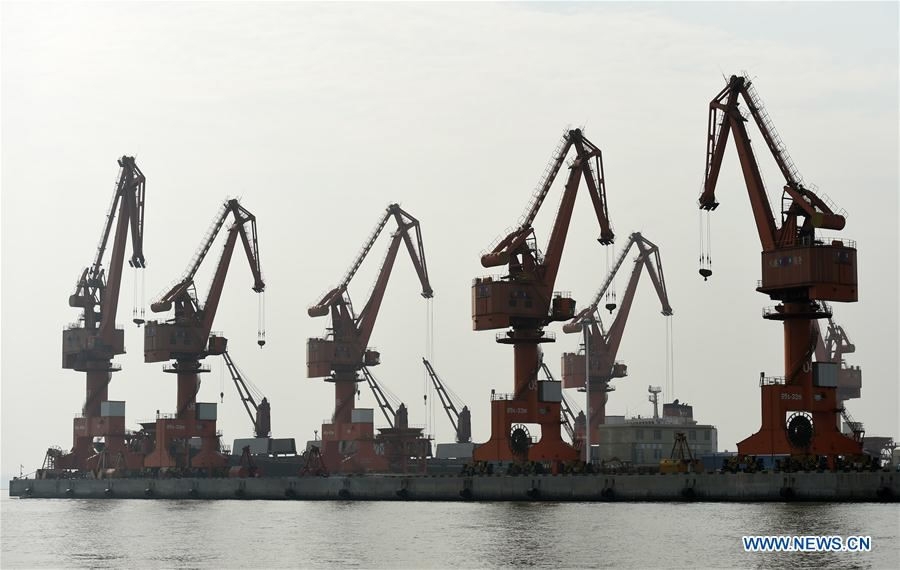
Qinzhou port in south China's Guangxi Zhuang Autonomous Region. /Xinhua Photo
Qinzhou port in south China's Guangxi Zhuang Autonomous Region. /Xinhua Photo
In the same month, President Xi Jinping said, “Guangxi should become an international pathway to ASEAN countries, a new strategic pivot in Southwest and Central China's opening up strategy, and a dynamic portal connecting the 21st Century Maritime Silk Road and the Silk Road Economic Belt.” Two years later, during a visit to Nanning in April 2017, Xi reiterated the same call, urging Guangxi to make full use of the potential of its coastlines, rivers and border areas to promote opening up, according to Xinhua News Agency.
The revolution in infrastructure has put Guangxi on the map as a major transportation junction.
A transport pivot
A total of 13 expressways, 11 railway lines extend Guangxi’s linkages to nearby territories and countries. Terminals at the port of Nanning permit the berthing of 2,000-ton class cargo ships, while the Qinzhou Port has five direct trade routes to Hong Kong, Taiwan, Vietnam, Thailand and Singapore.
Four highway passages between Guangxi and Vietnam have already been planned, with two already completed. Another three bridges to Vietnam have also been built, according to Huang Fangfang, director of the Guangxi Development and Reform Commission.
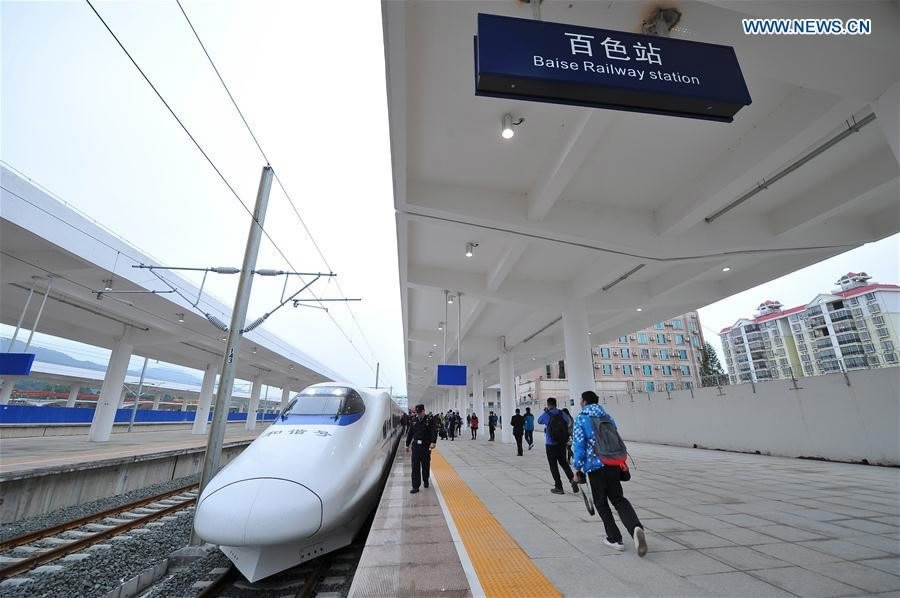
A high-speed railways connecting Nanning in Guangxi Zhuang Autonomous Region and Kunming, the capital of neighboring Yunnan Province, was opened in 2015. /Xinhua Photo
A high-speed railways connecting Nanning in Guangxi Zhuang Autonomous Region and Kunming, the capital of neighboring Yunnan Province, was opened in 2015. /Xinhua Photo
And that is only the tip of the iceberg. The Guangxi delegation to the National People's Congress has also submitted a proposal during the Two Sessions this year suggesting a land passage to Singapore. A document by the Hong Kong Trade Development Council (HKTDC), published in June 2017, noted that “actions are to be taken to expedite construction of the East Line of the Pan-Asia Railway and highways running from Nanning through Hanoi and Phnom Penh to Bangkok.”
Today, Guangxi’s land passes are a beehive of trade and its ports and parks are at the heart of the cargo flows, logistic activities, and exports processing between China and ASEAN.
The association is Guangxi's biggest trade partner. Between 2006 and 2015, the region’s trade volume with ASEAN soared from 1.83 billion to 29 billion US dollars.
"In 2016, Guangxi's border trade volume reached 145 billion yuan, about a three percent increase over 2015. Border trade has accounted for about 45 percent of Guangxi's total import and export volume," Ma Jixian, deputy director of the Department of Commerce in Guangxi told CGTN earlier this year.
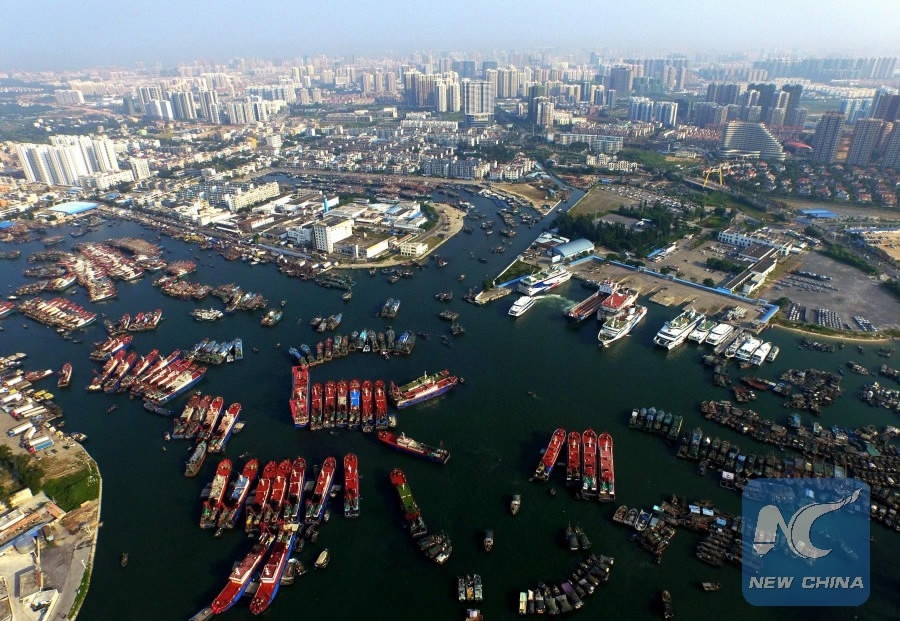
The port in Beihai city, south China's Guangxi Zhuang Autonomous Region. /Xinhua Photo
The port in Beihai city, south China's Guangxi Zhuang Autonomous Region. /Xinhua Photo
Guangxi has become so significant for ASEAN member states that six of the association’s countries, namely Cambodia, Laos, Malaysia, Myanmar, Thailand and Vietnam, have opened consulates in Nanning.
The 14th China-ASEAN Expo is a showcase of Guangxi’s efforts to take center stage in the cooperation between the two sides under the CAFTA framework.
The theme of the event this year is "jointly building the 21st Century Maritime Silk Road and boosting regional economic integration through tourism," underscoring the importance of the Belt and Road Initiative in the economic and people-to-people exchanges between China and the association, which have been facilitated by Guangxi’s evolution into a vital regional node.

SITEMAP
Copyright © 2018 CGTN. Beijing ICP prepared NO.16065310-3
Copyright © 2018 CGTN. Beijing ICP prepared NO.16065310-3